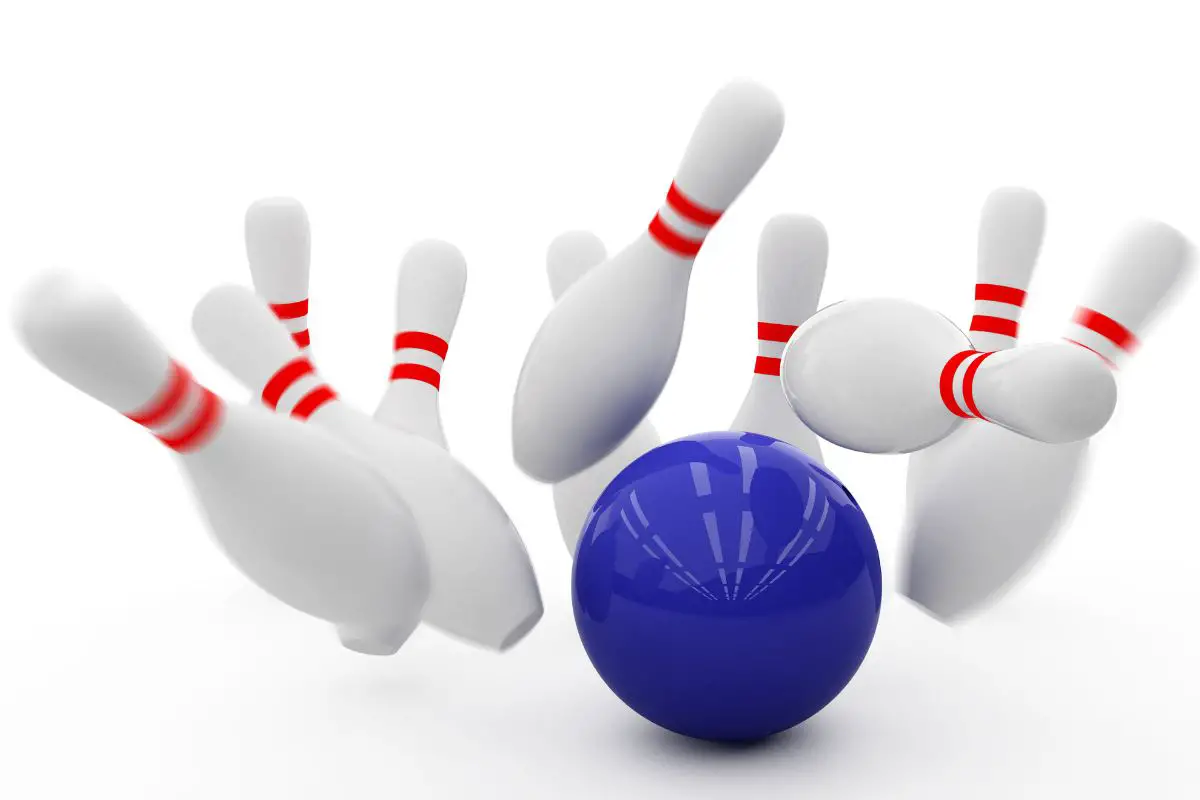We all know what bowling is, right? It is an international sport of recreation, with more beginner and recreational players than most other sports.

The professional leagues of bowling are already pretty hard to reach, but some bowlers decided to create a slightly harder sport to challenge the best.
This is duckpin bowling, it’s a much harder version of bowling that has slightly different equipment and slightly different rules but looks and plays very much like the game that inspired it.
If you feel like you need a challenge, and are already a good bowler, you should consider the challenging game of Duckpin bowling. Keep reading to learn about this harder game.
History Of The Game
The origins of the game are surprisingly disputed, but it is certain the game started in America around the turn of the century.
An original assertion from a Pittsburgh newspaper suggested the game was made in 1900 in Baltimore.
However, this claim has been disputed by others who suggest that the game had existed as early as the 1890s in other areas such as New Haven and Boston. Potentially as early as 1892.
Duckpin bowling was not an organized or recognized sport until the National Duckpin Bowling Congress was formed in 1927.
Equipment
Perhaps the most notable and seismic difference in duckpin bowling in comparison to tenpin bowling is the changes in equipment. It can be said that duckpin bowling is essentially a smaller and more accurate and thus harder game of bowling.
Notably, the ball is much smaller and lighter than those used in normal ten-pin bowling. Duckpin bowling balls weigh around 3.3 lbs – 3.7 lbs, while a bowling ball weighs between 6 – 16 lbs.
Notably, the duckpin bowling ball does not have finger holes and is rolled out of the hand, while tenpin bowling relies on the release from the grip of your fingers to create momentum.
With this in mind, the pins are also smaller. The stout and slightly wider stature of the duckpin makes them look a little like a duck, which is where the sport’s name comes from.
However, the pins are often organized in this triangular fashion as they are in ten-pin bowling.
Rules And Regulations
Generally, the rules of duckpin bowling don’t differ too greatly from the rules of ten-pin bowling.
The general scoring rules are basically the same, the goal is to knock as many pins over as possible with as few throws in one frame.
If you knock all the pins in one throw this is known as a strike, and a spare is when it requires two throws to knock over all the pins.
However, this is the main difference, in duckpin bowling you get three throws rather than two. This is mainly because the game is much harder and requires much more technique and accuracy in the throw due to the lighter ball.
With this in mind, there is a change in rules as you can theoretically knock over all the pins in three throws which does not occur in regular tenpin bowling.
This means when you knock over all the pins in three throws, rather than a ‘spare’, this is known as a ‘ten’, and you simply record 10 points with no addition, similar to candlepin bowling which also has more than two throws.
This is the main change to be aware of in duckpin bowling, there is a third throw. The alleys are basically the same as tenpin, with the same distance and width from the pins, but the gutters are, of course, smaller for the ball.
Difficulty And Average Score
As we have outlined in the previous sections, you can imagine that duckpin is much more difficult than generic tenpin bowling. The lightness and smallness of the ball require you to throw with more accuracy and is harder to knock over all the pins.

As a result, you can imagine that the average score is much lower in the game, but is affected by a few factors. As you can imagine, duckpin bowling is less ‘recreational’ than ten-pin bowling.
Ten-pin bowling can be played by basically anyone and is majoritively made up of recreational players with a smaller number of pro bowlers.
The opposite can be said of duckpin bowling because it is much harder. You are generally getting people who are good at tenpin bowling playing duckpin bowling for a little more of a challenge.
There are generally fewer recreational players in the world of duckpin bowling, most people who play would be considered proficient to professional in the sport.
However, with this said, no one has ever scored a 300 in duckpin bowling. In ten-pin bowling a 300 game is a perfect game that requires 9 consecutive strikes plus three pins in the final frame.
While this happens often in pro bowling, this has never, repeat never, happened in Duckpin.
The closest anyone has got to 300 in duckpin bowling is 279 which was rolled by Pete Signore Jr. in 1992. No one has beaten that score to date.
In Summary
In essence, duckpin bowling is essentially a smaller version of tenpin bowling. The main differences are that the balls are much smaller and lighter, requiring more accuracy, as well as lacking the finger hotels of the heavier ten-pin bowling ball.
The pins themselves are actually smaller than ten-pin bowling pins as well, adding to the difficulty.
As the sport is much harder, you get a third, extra, throw than you would in ten-pin bowling.
No one has ever scored a perfect game in duckpin bowling. Its increased difficulty means that there are more serious and competitive players within duckpin than there are in tenpin bowling, which remains a more recreational sport.
The popularity of sport changes regularly, in 2016 there were 41 congress-certified duckpin bowling alleys which were actually down from around 450 in 1963.
The most duckpin bowling alleys are in Connecticut and Rhode Island where the sport is most popular, within the US.
- A Comprehensive Guide to the Top Bowling Movies of All Time - December 23, 2023
- Bowling Shoes Selection Guide: How to Choose the Right Fit - September 27, 2023
- Bowling Ball Buying Guide: How to Choose the Right Ball for You - September 23, 2023









